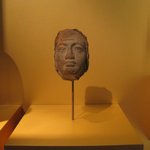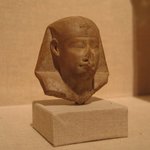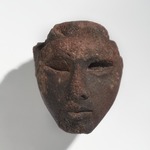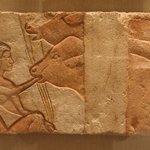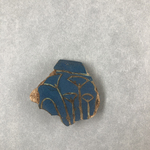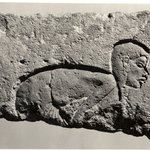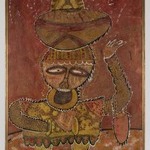

Talatat, ca. 1352–1332 B.C.E. Limestone, 9 1/4 × 21 × 2 1/8 in., 26.5 lb. (23.5 × 53.3 × 5.4 cm, 12.02kg). Brooklyn Museum, Gift of Albert Gallatin and Stanley J. Love, by exchange, Frank L. Babbott Fund, Henry L. Batterman Fund, Charles Edwin Wilbour Fund and Designated Purchase Fund, 2019.13 (Photo: Brooklyn Museum, 2019.13_PS11.jpg)

Talatat, ca. 1352–1332 B.C.E. Limestone, 9 1/4 × 21 × 2 1/8 in., 26.5 lb. (23.5 × 53.3 × 5.4 cm, 12.02kg). Brooklyn Museum, Gift of Albert Gallatin and Stanley J. Love, by exchange, Frank L. Babbott Fund, Henry L. Batterman Fund, Charles Edwin Wilbour Fund and Designated Purchase Fund, 2019.13 (Photo: Brooklyn Museum, 2022.17_2019.13_L2019.5_86.226.30_view02_PS20.jpg)
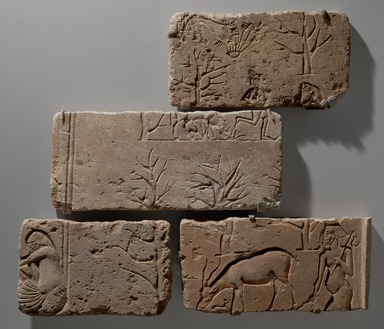
Talatat, ca. 1352–1332 B.C.E. Limestone, 9 1/4 × 21 × 2 1/8 in., 26.5 lb. (23.5 × 53.3 × 5.4 cm, 12.02kg). Brooklyn Museum, Gift of Albert Gallatin and Stanley J. Love, by exchange, Frank L. Babbott Fund, Henry L. Batterman Fund, Charles Edwin Wilbour Fund and Designated Purchase Fund, 2019.13 (Photo: Brooklyn Museum, 2022.17_2019.13_L2019.5_86.226.30_view01_PS20.jpg)
Talatat
Egyptian, Classical, Ancient Near Eastern Art
On View: Amarna Period, Martha A. and Robert S. Rubin Gallery, 3rd Floor
- Place modified: Hermopolis, Egypt
- Reportedly from: Tell el-Amarna, Egypt











